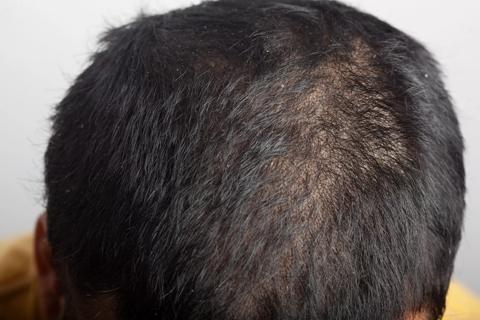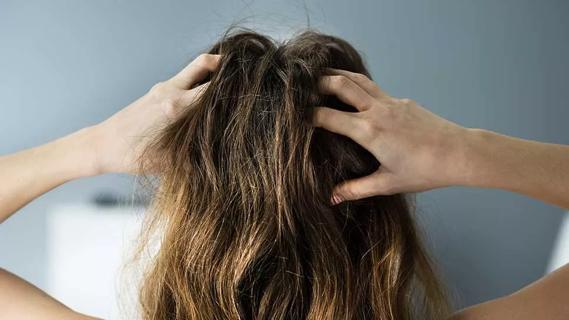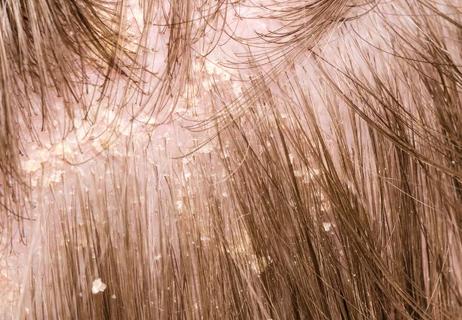Lice don’t jump — but they can spread with direct head contact

Head lice are one of those things you’d really rather not think about, let alone talk about, thank you very much.
Advertisement
Cleveland Clinic is a non-profit academic medical center. Advertising on our site helps support our mission. We do not endorse non-Cleveland Clinic products or services. Policy
But you probably know that the possibility of contracting lice is always simmering under the surface — or straight up in your face, thanks to those “alert letters” from your kid’s school.
Pediatrician Jason Sherman, DO, shares what you need to know about lice — from whether they can jump to what to do if you’ve been exposed.
Misconceptions abound when it comes to how you get lice and what to do about them. And those misunderstandings only help fuel worries.
Dr. Sherman shares these lice truths.
Lice don’t jump, leap or fly. What they’re really good at is crawling — and hanging on for dear life.
“That’s why most transmission is by direct head-to-head contact,” Dr. Sherman points out.
In other words, lice are most likely to spread when your hair touches another person’s hair. Like when hugging, resting your heads together or playing contact sports.
Contrary to popular belief, lice don’t spread disease. Unlike some other bugs that can make you sick, lice are simply nuisances.
The one caveat is this: Lice bite. And they leave saliva when they do. That itches. You respond by scratching. Repeated or aggressive scratching can cause bleeding or open sores on your scalp. And any open wound runs the risk of getting infected.
Advertisement
Lice are tiny, and they move fast. Their eggs (called nits) can be easy to mistake for pieces of lint or a bit of dandruff.
To check for lice, look through your child’s hair with a fine comb. Pay particular attention to places lice like to hang out most: behind the ears and at the base of the neck.
Here’s what you’re looking for:
Lice are parasites that live off human blood. (Think of them as teeny vampires.)
“Like any living organism, lice need to eat. They need your blood to survive,” Dr. Sherman explains.
And they can’t survive more than 24 hours without chowing down.
So, yes, sharing hairbrushes, hats, bedding and other items could increase your risk of getting lice. But only if someone with lice has used those items in the past day or so.
Lice often carry a social stigma. But they shouldn’t.
In reality, anyone can get lice. It’s not a reflection on cleanliness or grooming habits.
“Lice don’t care how dirty or clean your hair or your scalp is,” Dr. Sherman clarifies. “You can’t shampoo away your risk of lice.”
Some schools have policies that restrict kids with lice from attending class. So, check with your school for guidance.
But guidelines from the American Academy of Pediatrics (AAP) say that kids with lice should be allowed to remain in class.
Why?
For starters, when you find head lice on a child, it’s not usually a new thing. It typically takes about a month for itching to start, which is typically the first sign of lice. What’s more, taking kids out of class can affect their academic progress, and it can be stigmatizing.
Instead, the AAP recommends treating lice at home (more on that in a bit) and practicing effective lice-management strategies, like:
Let’s be clear: Lice are very, very common. Some estimates say that up to 12 million kids in the United States are infested each year.
Even with your best efforts, you or your child can bring them home. It’s no reflection on either of you.
But you may lower your chances of lice by taking some precautions:
Advertisement
If your child has lice and is under 2, consult your pediatrician.
For older children, over-the-counter lice removal shampoos are your first course of action. Look for products that contain one of these ingredients:
“When used correctly, these products are generally well-tolerated and have high rates of cure,” Dr. Sherman notes.
Follow all package directions. That includes treating for a second time, as specified on the packaging. That’s typically about 10 days after the first treatment. And, if at all possible, treat all members of the family at the same time to reduce the possibility of re-exposure.
Diligent combing is also really important to remove any residual nits. Specialized combs are sold for this, but any fine-tooth comb will do the job. This task is somewhat time-consuming, so set aside ample time.
Despite what you may have heard, certain home remedies — like covering your head in plastic wrap during treatment — aren’t effective, and some can cause harm. And contrary to some of the advice you see, healthcare providers don’t recommend using products in your hair like:
At best, these products can limit the effectiveness of treatments. At worst, they can be dangerous.
Advertisement
When it comes to cleaning your house after a lice outbreak, remember that lice die within a day if they’re not on a scalp. So, if your child hasn’t touched a household item recently, you don’t need to worry about it.
Sheets, pillows, clothing and other items that have close head contact should be washed in water that is hotter than 130 degrees Fahrenheit (54 degrees Celsius). If the item is something you can’t wash, such as a favorite stuffed animal, cover it or put it in a plastic bag for 48 hours.
No one wants to deal with lice. But prompt treatment matters.
And remember, you’re not alone. Millions of families cope with lice every year, and it’s nothing to be embarrassed about. If you’re dealing with recurring outbreaks or have any questions, talk with a healthcare provider, like a family medicine doctor or pediatrician. They may be able to recommend additional measures.
Advertisement
Learn more about our editorial process.
Advertisement

Calm an itchy scalp by using medicated shampoo, avoiding blow-drying and resisting the urge to scratch

Options range from allergic reactions and head lice to chronic conditions and fungal infections

The short answer from a dermatologist

The emergency room is for serious medical issues; urgent care can help when you can’t get a quick appointment with your child’s doctor

Gripe water isn’t regulated by the FDA, and research doesn’t support its use

Scalp cancers can occur because of long-term sun exposure

Some warts will clear up on their own, but others may need home remedies or medical care

Autism and OCD often co-occur, but distinguishing between them is crucial for successful treatment

Babies can get congested easily, but you can calm their cough by keeping them hydrated, using nasal drops and running a humidifier

Weight loss may cause loose, sagging skin and muscle loss to your rear

Several conditions, like vitiligo and fungal infection, can cause a loss of pigmentation, leading to white spots or patches on your skin